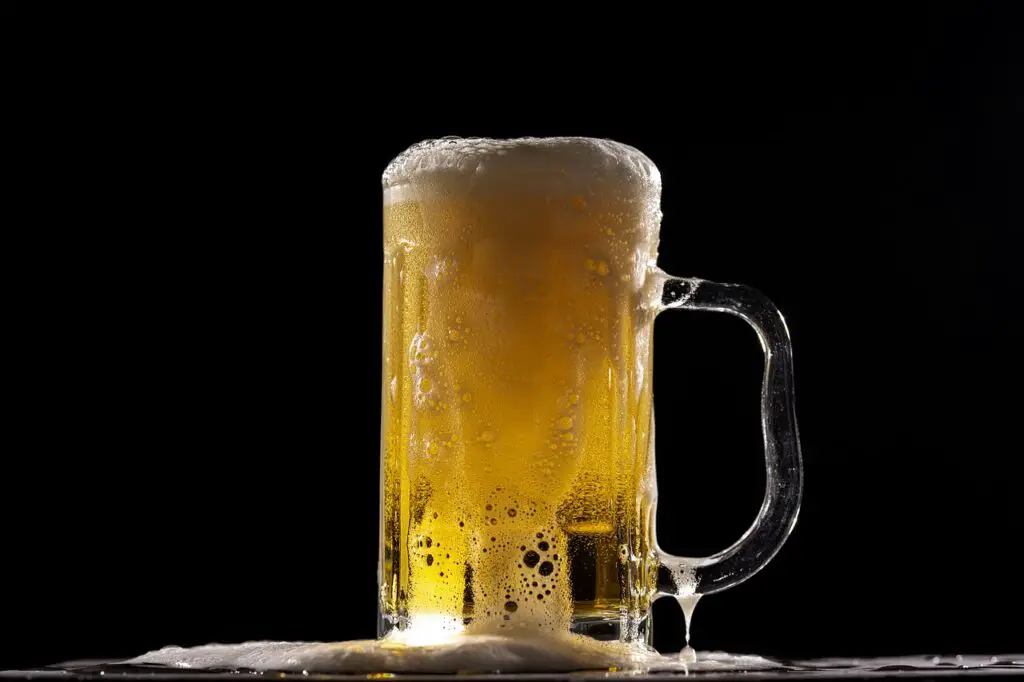If you buy something through a link in our posts, we may get a small share of the sale.
The amount of yeast in a beer plays a massive role in the taste, texture, and overall quality of the beer you are brewing. The suitable yeast will produce a well-balanced beer with good carbonation and no off-flavors. So, how much yeast is in beer?
Contents
How Much Yeast Is in Beer?
Generally, there is 0.007 Yeast in beer (fresh liquid yeast vials or packs per gallon per gravity point in ale beer), while lagers contain 0.015 fresh liquid yeast vials or packs per gallon per gravity point. For example, a 5-gallon batch of beer with an original gravity (OG) of 1.050 would require 1.75 fresh liquid yeast cells for ale or 3.75 fresh liquid yeast cells for a lager.

To arrive at the figures, you need to multiply the gravity of the beer by the number of yeast cells required by the gallons you have in your batch. For ale, you’ll need 0.007 times the gravity multiplied by the number of gallons in your batch. So, for ales, 5*0.007*50 = 1.75 yeast cells are required. So, for lagers, 5*0.015*50 = 3.75 yeast cells are required.
However, the amount of yeast you need will vary depending on several factors, such as the type of beer you are brewing, the specific gravity of your wort, and the pitching temperature. Usually, it is best to use a starter culture to ensure you pitch the right amount of yeast.
Why Does Yeast Matter When Brewing Beer?
Yeast is a critical ingredient in the brewing process, as it is responsible for fermenting the sugars in the wort, which produces alcohol and carbon dioxide. The type of yeast you use will determine the final characteristics of your beer. For example, using a lager yeast will produce a crisp, clean-tasting beer, while using an ale yeast will produce a fruitier, fuller-bodied beer.
The amount of yeast you use will also affect the final characteristics of your beer. Using too much yeast will result in a beer that is overly carbonated and has an unpleasant yeasty flavor. Using too little yeast will result in a flat beer that lacks flavor.
Remember that yeast work in two different ways to ferment your beer. The bottom and top fermentation. Bottom fermentation occurs at the bottom of your fermentor, where yeast works at the bottom of the wort and ferments it from the bottom up. Top fermentation occurs at the top of your fermentor, where yeast works at the top of the wort and ferments it from the top down.
How to Use Yeast in Beer Brewing
Brewing is a delicate process that requires the perfect balance of ingredients to create a delicious beer. The type of yeast you use and the amount of yeast you use will profoundly affect the final product. When you are ready to start brewing, it is essential to have all of your ingredients measured out and ready to go.
In most cases, you will want to use a starter culture to ensure you have the correct amount of yeast. A starter culture is a small batch of beer fermented with a specific amount of yeast. This allows you to get an accurate count of the yeast cells you will need for your batch of beer.
To make a starter culture, mix the correct amount of yeast with some wort and allow it to ferment for a few days. Once the starter culture is ready, you can add it to your batch of beer. This will ensure that you have the correct amount of yeast, and it will also help to jump-start the fermentation process.

Common Types of Beer Yeast Available
Yeast comes in different ways, allowing brewers to create different kinds of beer. The following are some of the most common types of yeast available:
- Brewers’ yeast: This is the most common yeast used in beer brewing. It is a hardy yeast that can tolerate various temperatures and alcohol levels.
- Instant yeast: Instant yeast is a dried yeast designed to be used without a starter culture. It is a good option for beginner brewers who want to get started quickly.
- Liquid yeast: This yeast is available in a liquid form and comes in various strains. Liquid yeast is a good option for experienced brewers experimenting with different flavors.
Frequently Asked Questions
How Much Yeast Is in a Liter of Beer?
There are 0.5 to 0.8 grams of yeast in a liter of beer. This amount will vary depending on the type of beer and brewing method. It will also vary depending on the specific gravity of the wort and the pitching temperature.
Will Bread Yeast Work for Beer?
Yes, bread yeast will work for beer. However, it is not the best option, as it can produce an unpleasant flavor. It is also not as tolerant of high temperatures and alcohol levels as brewers’ yeast.
Conclusion
Yeast count is an important part of the brewing process, as it will affect the final characteristics of your beer. An optimal amount of yeast will help create a delicious, flavorful beer. Too much or too little yeast can result in an inferior product. Cheers!
